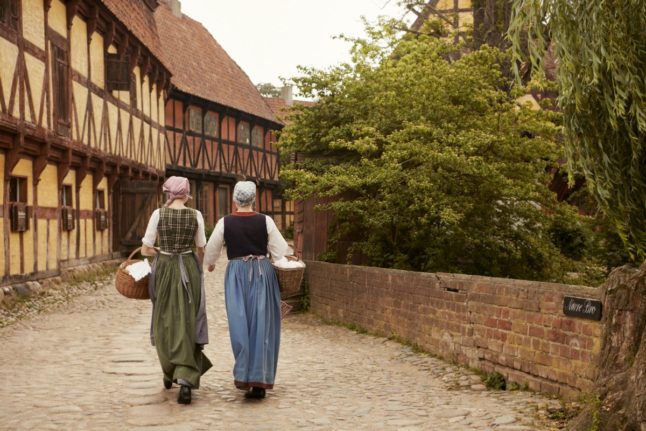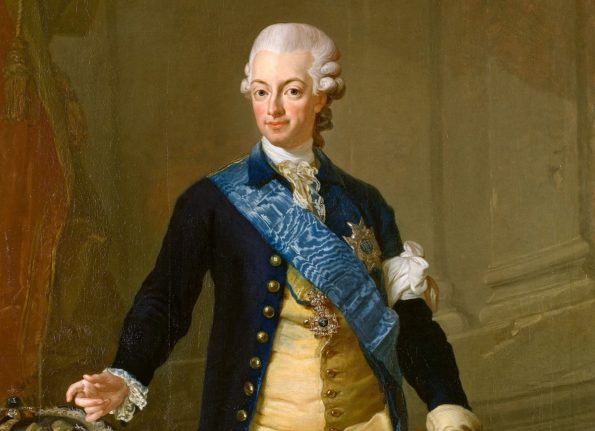For what seems on the surface like a secular country, Denmark takes its religious holidays seriously. Denmark, and other the countries it once ruled such as Norway and Iceland, are among the few places in the world outside the Spanish and Portuguese speaking world where Maundy Thursday, the first day of Easter, is a public holiday.
Denmark is also strict with shop opening times, with the Lukkeloven, or closing law, requiring most shops to remain shuttered over most of the Easter period, with the exception of Easter Saturday.
Schools in Denmark are off from Monday 25th to Monday April 1st, with pupils returning (hopefully refreshed) on Tuesday April 2nd.
Restaurants, hotels and the like, however, normally remain open throughout the Easter period, although it is worth checking as some don’t.
Finally, if you are planning to do some sightseeing in Denmark over Easter, you’ll find almost all museums remain open as normal, including on Easter Sunday itself, with some even extending normal opening hours.
Shops
All major supermarkets in Denmark are required by law to remain closed on Maundy Thursday, Good Friday, Easter Sunday and Easter Monday, with only smaller local grocery shops with a turnover of less than 43.4 million kroner a year allowed to stay open.
You’ll find some convenience stores from the Dagli’Brugsen and Brugsen chains open, as well branches of COOP’s discount chain 365discount, and smaller shops in the Kvickly and Superbrugsen chains.
The closing law allows the Danish Business Authority to grant some grocery stores in rural areas and holiday home areas to stay open on public holidays on a case by case basis, but if you’re travelling out to a rural area, don’t bet on anything being open.
Petrol stations are also allowed to stay open, as are shops selling bread, dairy products and newspapers, garden centres, second-hand shops and pawnbrokers, and market stalls selling food and household products.
But even smaller shops selling durable goods like clothes, shoes, or other items other than groceries must remain closed.
If you’re planning on buying a more upmarket wine or snaps for your Easter meal, you should be aware that specialist wine merchants will also be closed.
Thankfully for anyone who has forgotten to buy essentials for the Easter meal, supermarkets are open more or less as usual on Easter Saturday.
READ ALSO: Påskefrokost: What are the essentials of a Danish Easter lunch?
Museums
Many museums in Denmark remain open throughout the Easter period, although some either extend or shorten their opening hours.
Museums open as normal
Den Gamle By, the open air museum outside Aarhus where actors bring historic houses to life, goes big on Easter, with the staff recreating Danish eater traditions throughout the ages and an Easter lunch on Saturday. It is open every day of the holiday.
Denmark’s National Museum, in Copenhagen, is closed on Easter Monday, as it is on all Mondays, but otherwise open. Copenhagen’s Botanical Gardens, which are part of the National Museum, are however open on Easter Monday.
The Danish Architecture Centre in Copenhagen is open every day of Easter.
The Viking Ship Museum in Roskilde is open as usual from 10am to 4pm throughout Easter.
Museums with shorter opening hours
Copenhagen’s Glyptoteket art gallery is closed on Easter Monday, as it is on all Mondays, and closed at 5pm on Maundy Thursday rather than the usual 9pm.
The Louisiana Museum of Modern Art north of Copenhagen has shorter weekend opening hours on all days of the Easter holiday, opening from 11am to 6pm.
Museums with longer opening hours
The Moesgaard Musum, outside Aarhus, which features the world’s best preserved bog man, is open until 7pm rather than the usual 5pm on all the days of the Easter holiday, and is open, as usual, to 9pm on Easter Saturday.
The ARoS Aarhus Art Museum is opening specially on Easter Monday between 10am and 9pm, and is open as normal on all the other days of Easter.
The Design Museum in Copenhagen, which is normally closed on Mondays, is open on Easter Monday.
The Lego House museum in Billund has longer weekend opening times, open between 10am and 7pm from Maundy Thursday to Easter Monday.
Medical
Most Danish primary care centres are closed over Easter from March 25th to April 1st. If you urgently need a doctor over the Easter break you should ring the number of your local on-call doctor (lægevagt), emergency dentist or emergency psychiatrist, which you can find listed for Denmark’s regional health authorities here.
The person on the phone will then decide whether you need to come into a hospital or emergency clinic for treatment or examination.



 Please whitelist us to continue reading.
Please whitelist us to continue reading.
Member comments